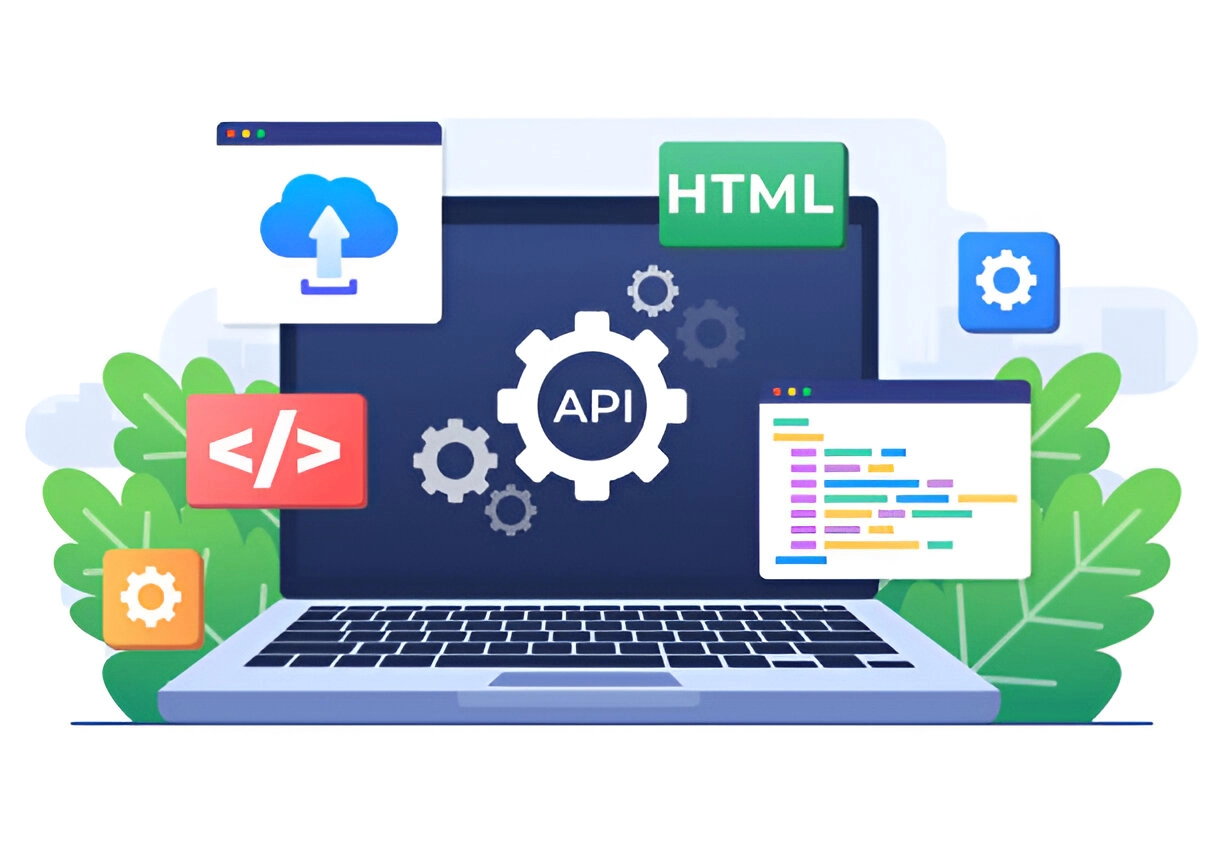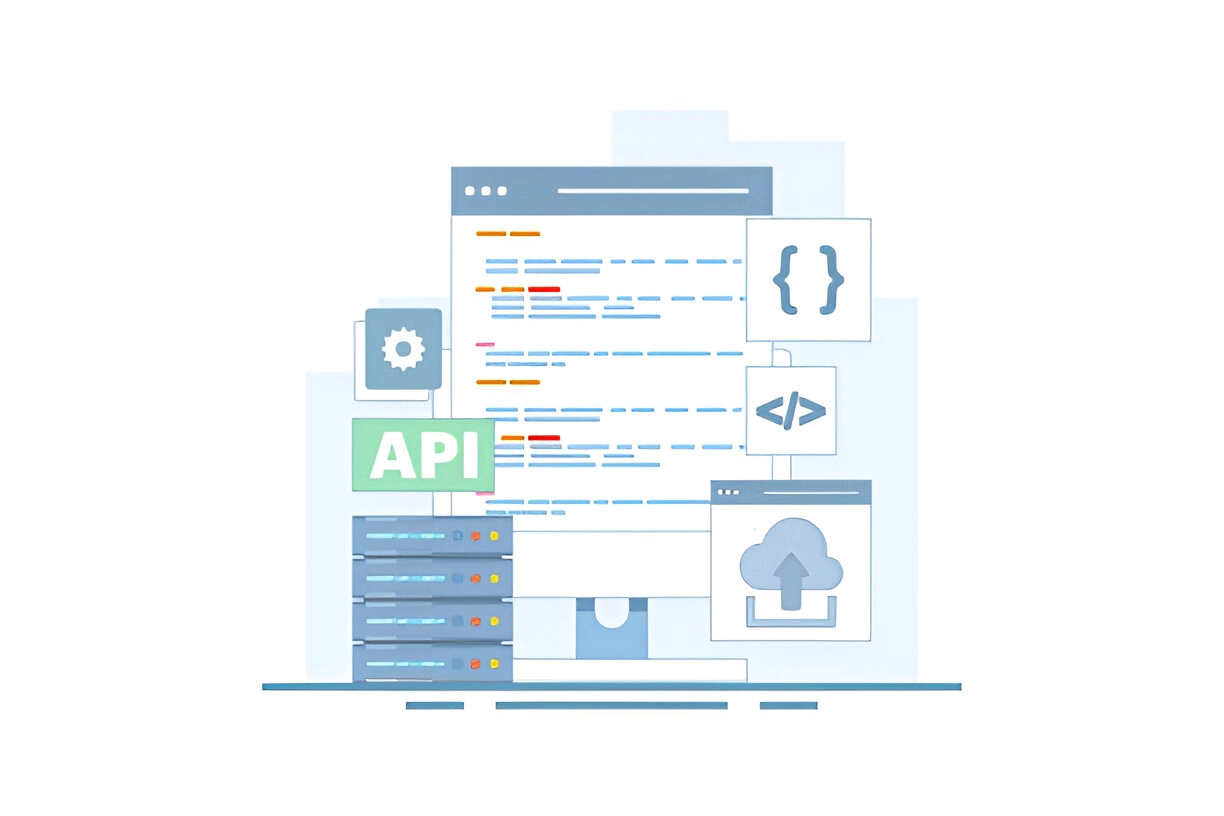Top 5 API Source Validation Tips to Boost Data Accuracy
Your app pulls weather data. It says “75° and sunny.” Users head out… into
a thunderstorm. Chaos. Or worse: Your payment system trusts an API. It’s a hacker. Breach. This isn’t sci-fi, it’s the daily risk of unvalidated APIs. Is your app blindly trusting strangers with its most vital data?
API source validation is your digital bouncer, your data detective, your essential peace of mind. It’s how you stop bad data, malicious actors, and costly errors before they sabotage your app, your users, and your reputation. In the US, with regulations like CCPA and GDPR breathing down your neck, and data breaches costing businesses millions ($9.44M average in 2022!), validation isn’t optional. It’s survival.

Cutting Through the Jargon: What Validation Does
Forget complex definitions. Think of API source validation as your multi-layered security checkpoint:
Prove Your ID! (Authentication & Authorization):
- Before any data enters, demand credentials. API keys, OAuth tokens, JWTs – these are the digital ID badges.
- Then ask, “Are you allowed to do that?” Checks permissions tightly.
- Why it Matters: Stops impostors pretending to be your payment processor, bank, or CRM.
Hands Off My Package! (Data Integrity):
- Data flies across the web. How do you know it wasn’t messed with?
- Hashing (like a unique fingerprint) or digital signatures confirm it arrived untouched. Fingerprint mismatch? Reject it!
- Why it Matters: Prevents hackers from altering prices, account details, or injecting malware mid-flight.
This Isn’t What I Ordered! (Schema Validation):
- Expecting a neatly packed JSON box with “name,” “price,” and “status”?
- Schema validation tears open the box (figuratively!). Missing fields? Weird extras? Wrong format? Send it back!
- Why it Matters: Catches API changes, errors, and junk data before it crashes your app or shows users gibberish.
Something Feels Off… (Error Handling & Deep Checks):
- Just because an API says “200 OK” doesn’t mean the data is good.
- Peek inside! Is the response empty? Full of error codes instead of product info? Handle it gracefully – don’t let your app explode.
- Why it Matters: Turns potential crashes into smooth user experiences, even when upstream APIs fail.
Don’t Blow Up the Spot! (Rate Limits & Vigilant Monitoring):
- APIs have speed limits. Hammer them too hard? You get blocked.
- Track your calls! Sudden, massive spikes? Could be a bug, a hack, or a feature gone wild. Spot fires before they torch your app.
- Why it Matters: Keeps your app running smoothly and avoids getting blacklisted by critical services.
Why Skipping Validation is Playing with Fire
Think validation is too much work? Consider the fallout:
- User Trust Torched: Wrong prices? Inaccurate delivery times? Faulty info? Users flee. Fast. Recovery is brutal.
- Security Nightmare: Unvalidated APIs are hacker superhighways. Data breaches, stolen credentials, and ransomware. The $9M+ cost? Just the start.
- Compliance Catastrophe: CCPA, GDPR, PCI DSS? Violating them via bad API data means massive fines and legal hell. Validation is your proof of due diligence.
- App Meltdowns: Bad data crashes features. Unexpected API errors bring everything down. Performance tanks, users rage-quit.
- Brand Bomb: News of a breach or chronic errors? Reputational damage is the hardest to fix.
Your Battle Plan: Fortify Your App NOW
Ready to lock it down? Start smart:
- Demand Credentials: Never, ever call an API without strong authentication (API keys, OAuth2). Zero exceptions.
- Validate Ruthlessly: Use battle-tested tools: JSON Schema validators, OpenAPI specs, built-in language libraries. Check the structure like a hawk.
- Guard Critical Data: For payments, PII, health info? Add hashing or digital signatures. Tamper-proof the essentials.
- Expect Failure: Code for it! Check HTTP statuses and dive into the response body. Handle errors silently, inform users gracefully.
- Watch Like a Sentinel: Monitor API usage & errors (Grafana, Datadog, CloudWatch). Set alerts for spikes or failures. Know before your users do.
Stop letting unknown APIs gamble with your success. API source validation is the bedrock of trust, security, and performance. It’s not just coding, it’s smart business armor.
Best Practices for API Source Validation
Here, one should adopt a strategic way of making API source validation. These are not only best practices to follow, but also catered to developers and their businesses in order of what needs to be done from the developer side, which works for the U.S. market adaptations as well.
Use Trusted API Providers
All APIs are not similar. Use only those providers who have a history of being dependable and secure. As an example, APIs from Amazon, Google, or Microsoft go through extended testing and are safe according to U.S. regulations. You’ll want to read the documentation for integrating an API as well as user reviews and certifications, ex, ISO 27001 for security.
Implement HTTPS and Secure Protocols
Data in transit is safer with HTTPS. This will be a no-brainer in 2025 because unsecured HTTP connections are ripe for man-in-the-middle attacks. There are also regulations like HIPAA that may require a business in the U.S. which is trading in patient or financial information to deploy HTTPS.
Validate Inputs and Outputs
Make sure you sanitize and validate any input that goes through the API, not to have any injection-type attacks, SQL, XSS, etc. Likewise, validate all outputs to make sure they are what you expected. For an API, if it sends a response as the age of a user, then the validation should be right, like a positive integer instead of a Negative Integer or a String.
Use Automated Testing Tools
Validating things like this manually is slow and error-prone. Postman, SoapUI, Apigee Tool: To debug against endpoints and check for authentication, data integrity, and schema compliance (API testing) are different tools. These tools can be particularly useful for US-based devs who want to get stuff done quickly without sacrificing the validation step.
Monitor and Log API Activity
Log API requests and responses to monitor performance, diagnose issues. While in the US, where data breaches are commonplace, logging can help you to identify issues quickly and act accordingly. For API monitoring and analysis, popular tools include Splunk or ELK Stack.
Stay Updated on API Changes
APIs can change, endpoints can move, the schema could be changed, or a new rate limit could be introduced. If you would like any further updates, you can follow their changelogs or developer newsletters.
For instance, Twitter is always rolling out new iterations of its API, and if you do not keep up, it can cause your application to completely stop working. It is super important to U.S.-based firms that are using real-time data (stock market, weather APIs) and may want to be more paranoid about the Anxious IO test in any subsequent DoT upgrade or replacement of TLS.
Common Challenges in API Source Validation
API Source Validation challenges are inherent even with the best practices. Being able to understand some of these will help you in your preparation and save you from making mistakes.
Inconsistent Documentation
3- Old or Inaccurate API Documentationapis-some-Version-of-the-truth. validation-danger. A poorly documented API can result in frustration if it does not indicate what format responses will be in, as error exceptions may never properly land. To avoid this, run the API through the sandbox environment completely.
Rate Limit Restrictions
After all, it could heavily alter your rate limit to the point where you get temporarily banned or throttled at a lower successful request/sec. The latter is a common problem for us, startups growing fast, not appreciating the volume of API calls made. Always build some fallback mechanism, such as a cache, to handle rate limit errors gracefully.
Handling Legacy APIs
Not all older APIs may support modern security practices or may be using deprecated protocols. Use a modern interface as a shield or consider an additional middleware layer to enforce the validation. Finances, health (both in the US and a bit more in Europe), and almost any industry that still has to run on top of its legacy systems.
Balancing Security and Performance
This means that you have to make sure to validate your incoming data, but if you are running thousands of checks (like deep object access) on every single call, this will soon render your application quite slow. But with a more effective validation logic, you could reduce latency without lowering security assurance. For one, cache your schema definitions to avoid validation repetition.
Tools and Technologies for API Source Validation
Luckily, there are a number of tools available to help you validate API sources. These are some of the most commonly used by U.S. developers:
- Postman: Test API Endpoints, Validate Responses, and Automate Your Workflows
- JSON Schema is a way to define and validate JSON data structures, widely used in API development.
- OpenAPI: OpenAPI is a blueprint for documenting and validating APIs to maintain consistency in the endpoints.
- OWASP ZAP: A must-have for U.S. businesses processing sensitive data, this security testing tool identifies security vulnerabilities in APIs.
- Grafana: Monitoring for a visual breakdown of how APIs are performing, helps detect anomalies.
The tools are designed to be user-friendly and cater to U.S. developers, many of whom work in API-rich applications and need efficient tools for managing multiple APIs.

API Source Validation in Action: A Real-World Example
Let’s consider a practical scenario. E.g.: You are an e-commerce business in the U.S. and keep a shipping API to offer your buyers real-time delivery estimates. These are all the things that may break if no validation is provided :
- Corrupted Information resulting in all wrong shipping rates
- Misaligned Schema: This is the most common reason why delivery dates are being missed.
- Security(If the API is not secured properly or missing authentication)
Here are your options to add (wrap) API source validation:
- Secure the API by utilizing an API key or OAuth token.
- Transact with a digital signature on shipping information.
- Validate the Schema for a Valid Syntax and if it contains all required fields (ex, cost, estimated_delivery) or not, because the JSON response is in pure text format.
- Monitor its usage to detect anomalies and ensure proper rate limits are in place within your API.
From this, your clients have an exact shipping expected time of arrival, which is also accurate, which gives them trust in the website and saves you from answering queries from customers.
The Role of API Source Validation in SEO
For a blogging website aimed at the U.S. audience, source validation, which is validated by API, indirectly impacts SEO. Websites with excellent content often rank more highly in search engines like Google.
If you get your dynamic content for something like current weather or prices and have to use an API, validation would make sure the super-fresh price isn’t out of date. This can result in incorrect data being displayed, which, of course, will lead to a poor user experience on your site and send users running for the hills (increasing your bounce rate) and ultimately lowering your SEO rankings.
In addition, API-verified also helps improve the speed of page load times, which is a necessity under Google Core Web Vitals. e.g., store API responses that have been validated in the cache, thus reducing requests to the server and improving performance. This is a competitive advantage for U.S. audiences since users naturally prefer speedy and stable websites to those that take forever to load.
FAQ: Common Questions About API Source Validation
Source validation: Checking API that ensures that data and responses from an API are correct, safe, and reliable. It is essential in data integrity, security threats and it needs to have a good user experience especially for the U.S. business where regulation standards are ordered.
You may use API keys, OAuth tokens or JWTs to validate an API. This makes sure the API provider is legitimate, not some other malicious actor.
For example: Postman for testing, JSON Schema for data validation, OpenAPI for documentation, OWASP ZAP for security and Grafana for monitoring. U.S. developers are using this en masse due to their reliability and how easy they can be used.
By performing the right verification, one can expect an accurate result and not only will it be more predictable but it helps to avoid overflows or same validity errors. That said, repeating the validations over and over can become a performance problem, so you should find an appropriate balance using cache to gain speed while keeping security in mind.
Yes, such validation provides an error-free and quality content improves UX and as a result helps to reduce bounce rates which is a good signal for SEO. This will also help loading your pages faster, which is one of the crucial ranking signals. API Source Validation | Overview & Importance
Is this API really validation or not?
What are the best tools for API source validation?
What impacts does API source verification have on the overall performance of your website?
How can API source validation assist you in SEO?
Conclusion
Validating API source is not just a technical checkbox; It is fundamental to building secure applications. By verifying API sources, it offers a greater asset for U.S.-based developers and businesses who must fulfill user expectations as well as regulatory standards.
However, adhering to best practices will mitigate risk for your users, using reputable providers, selecting secure protocol types, and leveraging automation tools. Whether you have a blog, e-commerce platform, or mobile app, it is globally ubiquitous to validate the origins of your API if you want to keep up with trust-based viability in the digital environment. Then you can test your APIs now and introduce more robustness into your application, and make end users happy.
